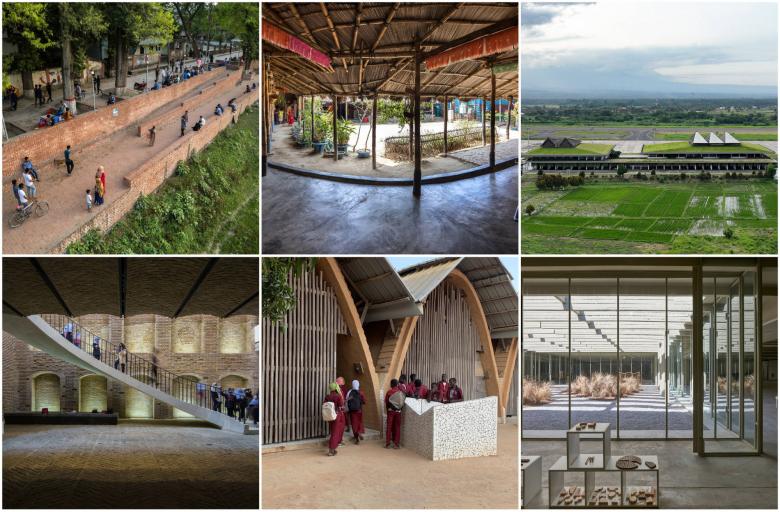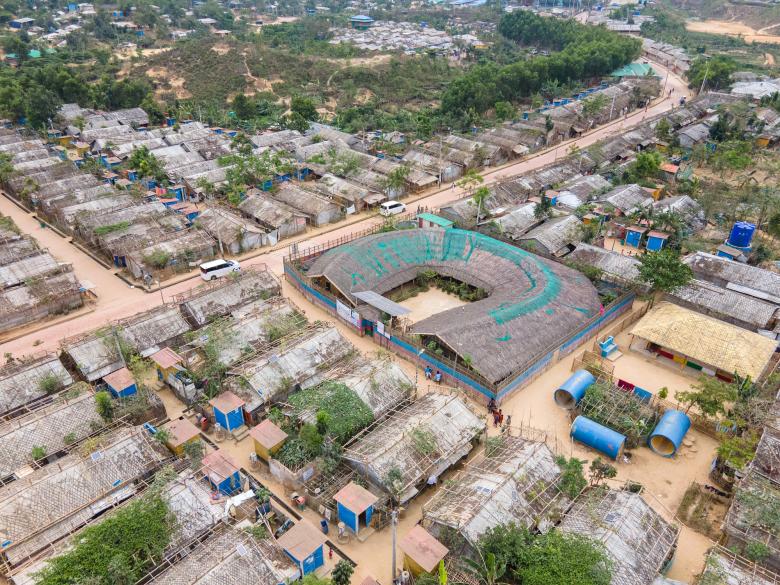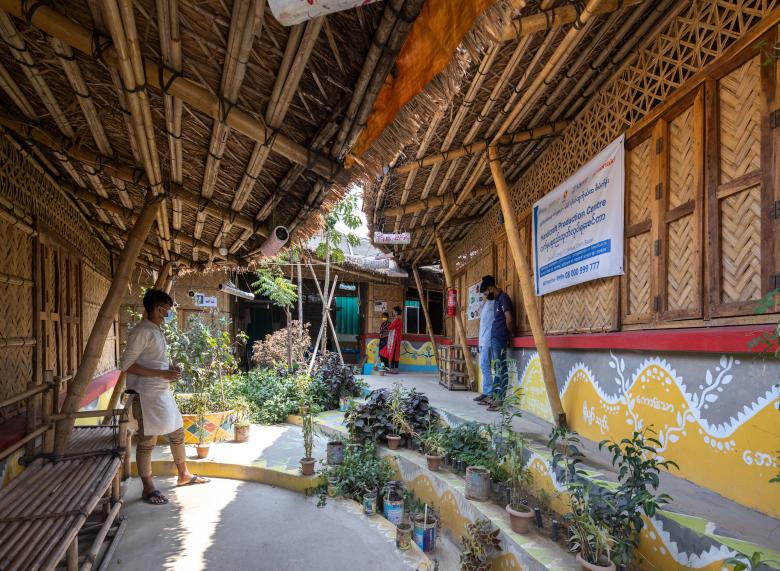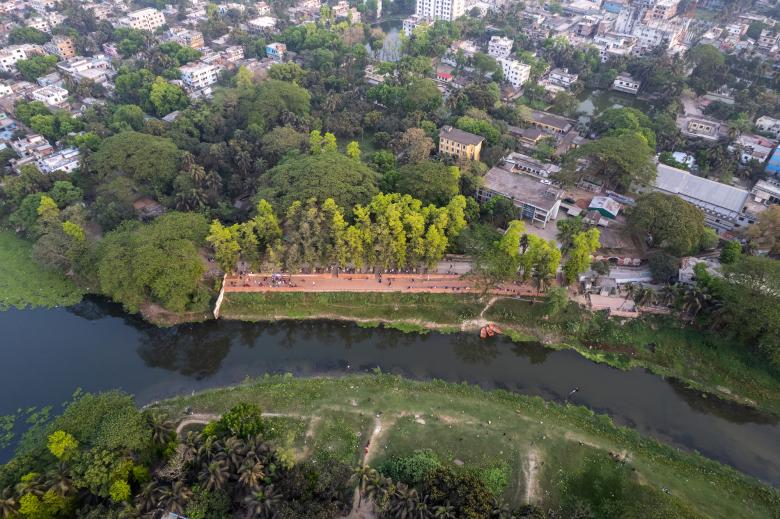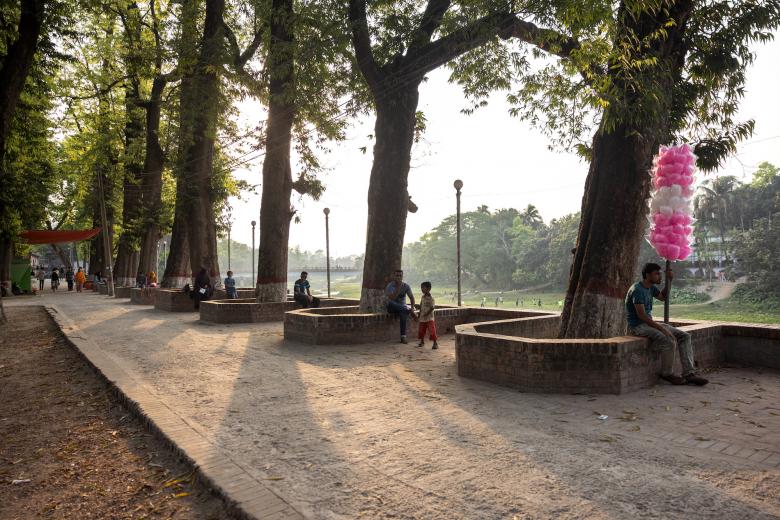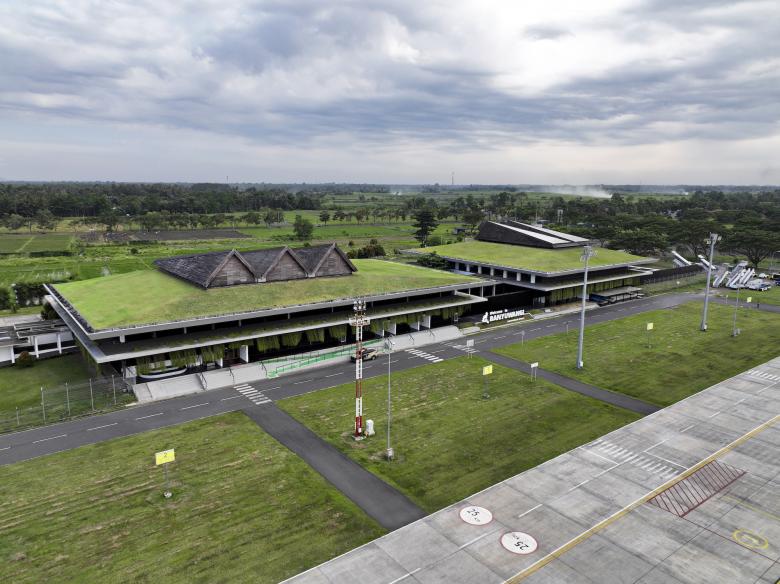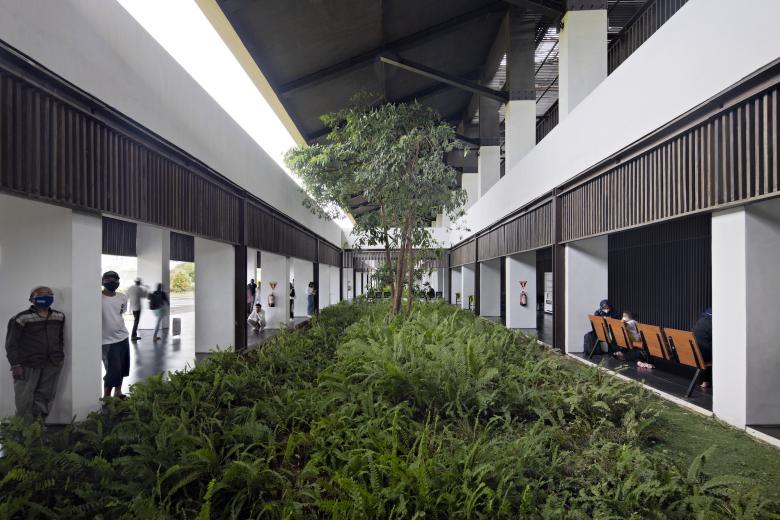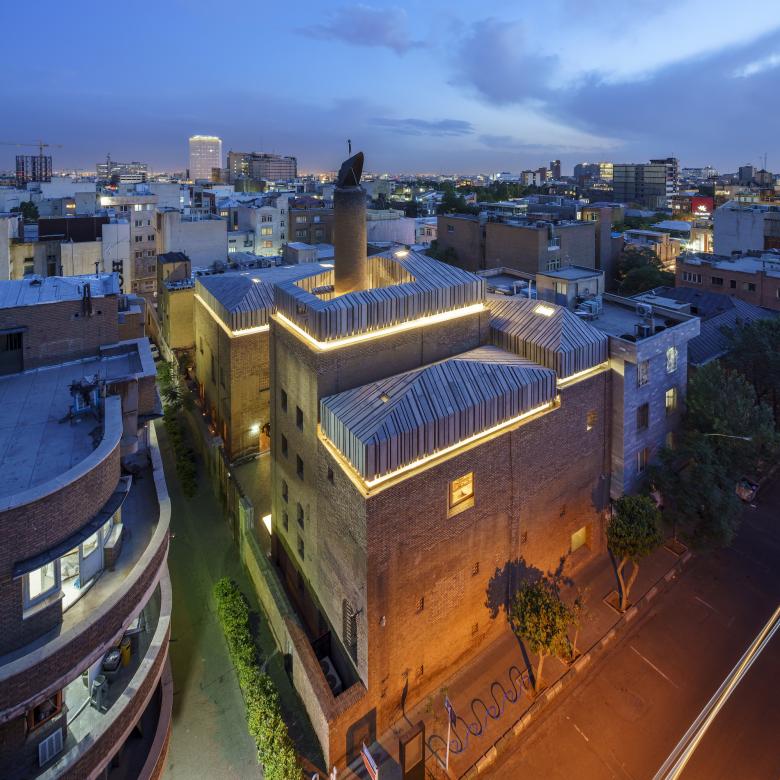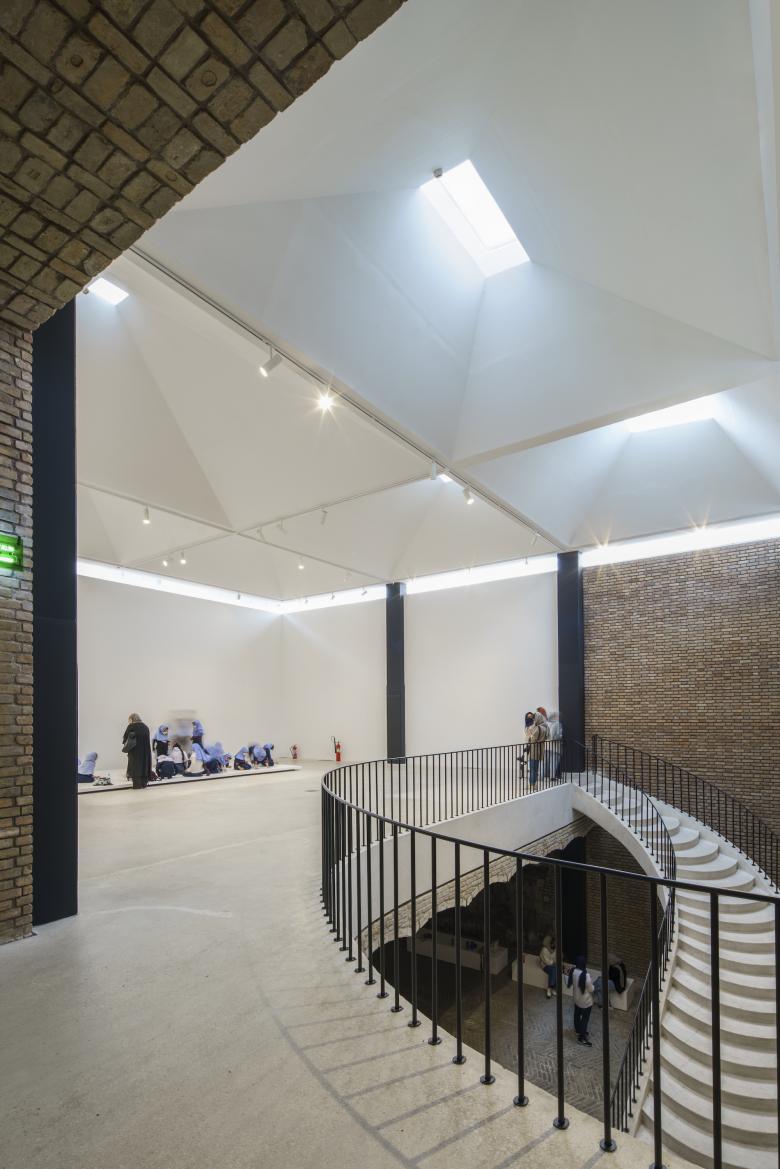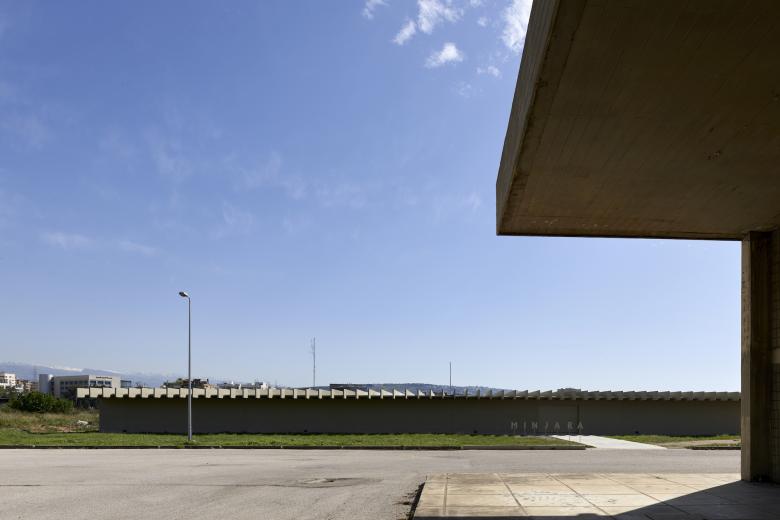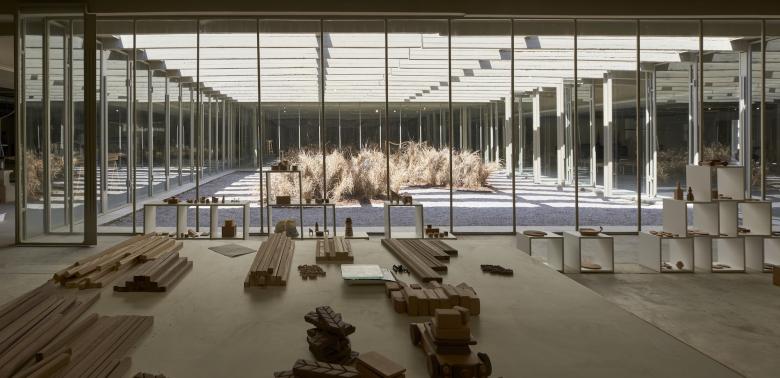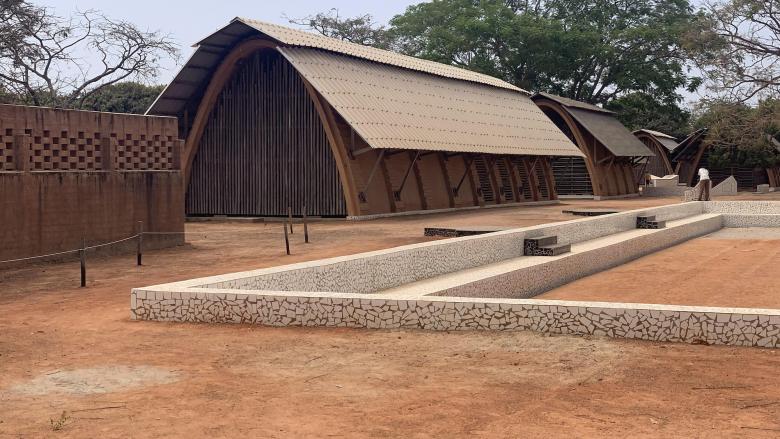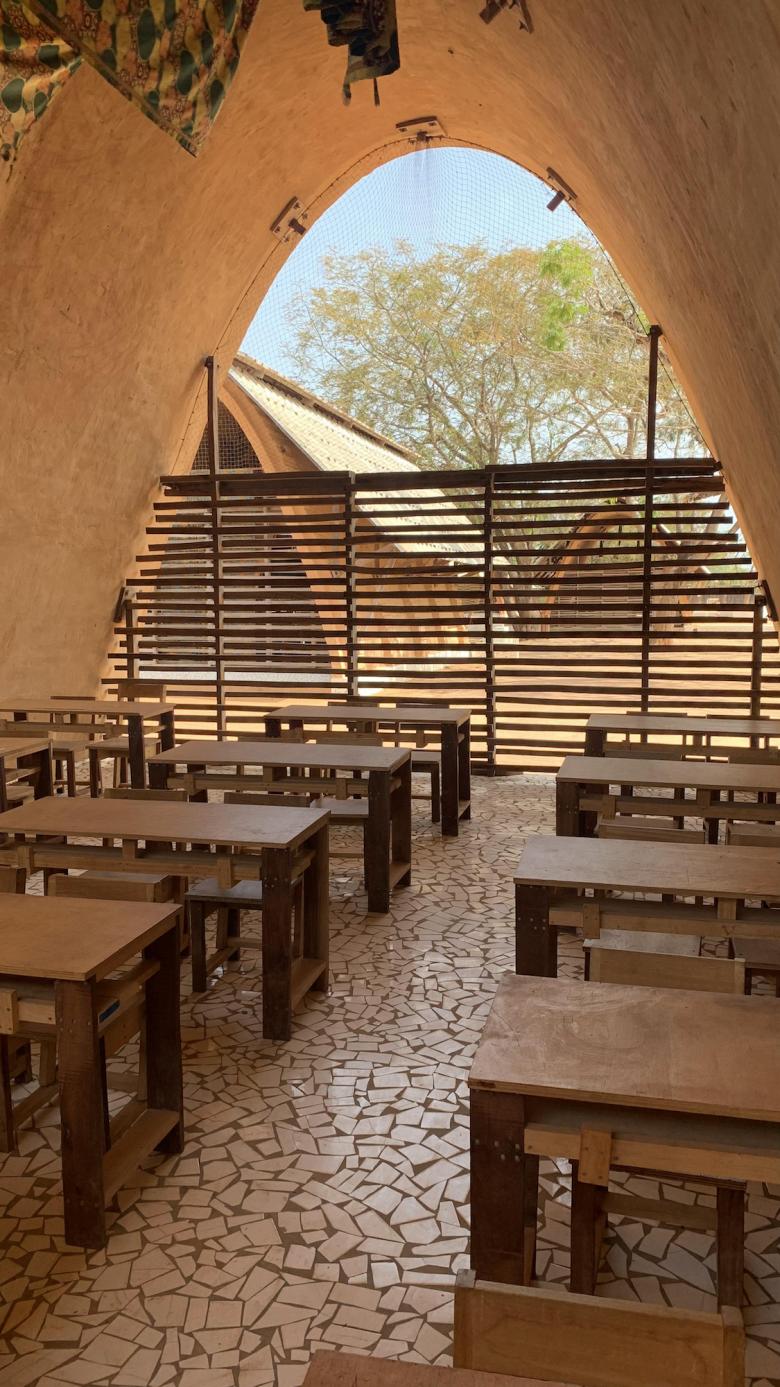Winners of the 2022 Aga Khan Award for Architecture
John Hill
22. september 2022
The six winners of the 2022 Aga Khan Award for Architecture (All photographs © Aga Khan Trust for Culture)
Six projects have been announced as winners of the 2022 Aga Khan Award for Architecture. The winners, ranging from an international airport in Indonesia to a riverfront landscape in Bangladesh, will split the $1 million USD prize.
The announcement of the winners of the Aga Khan Award for Architecture was made today, September 22, three months after twenty projects were shortlisted by the nine-member jury* for the prestigious triennial award.
The Aga Khan Award for Architecture was established by His Highness the Aga Khan in 1977 "to identify and encourage building concepts that successfully addressed the needs and aspirations of communities in which Muslims have a significant presence." The awards, now in their 15th cycle, reward the architects involved on the projects but also the "municipalities, builders, clients, master artisans and engineers who have played important roles" in them.
This combined focus on Muslim communities and recognition of the various project players have made the Aga Khan Award for Architecture one of the most important awards in architecture, while also drawing attention to projects that might not otherwise receive attention in other parts of the world.
The 2022 Aga Khan Award for Architecture winners, in alphabetical order by country:
- Bangladesh – Community Spaces in Rohingya Refugee Response
- Bangladesh – Urban River Spaces
- Indonesia – Banyuwangi International Airport
- Iran – Argo Contemporary Art Museum and Cultural Centre
- Lebanon – Renovation of Niemeyer Guest House
- Senegal – Kamanar Secondary School
Below is basic information on the winning projects, featuring images, excerpts from the jury citations, and short films produced by the Aga Khan Development Network (AKDN). Click the above links for much more information on the projects, as found on the AKDN website.
Bangladesh – Community Spaces in Rohingya Refugee Response
Community Spaces in Rohingya Refugee Response: Aerial view of the Shantikhana Women Friendly Space in Camp 4 extension. The construction started before the design was finalised, allowing the local Rohingya workers to express their artisanal skills and artistic freedom. (Photo: Asif Salman)
Community Spaces in Rohingya Refugee Response- Location: Cox’s Bazar District, Bangladesh
- Architect: Rizvi Hassan, Khwaja Fatmi, Saad Ben Mostafa
- Client: BRAC, Dhaka, Bangladesh; ActionAid, Dhaka, Bangladesh
Community Spaces in Rohingya Refugee Response: The Women Friendly Space (Camp 4 extension) offers a safe space for children to meet and play. (Photo: Asif Salman)
Extract from Jury Citation:"The six temporary community spaces of the Rohingya Refugee Response program provide a dignified, sensitive and ingenious response to emergency needs related to the major influx of Rohingya refugees into Bangladeshi host communities, with particular attention to the safety of women and girls. The concept and design of the six spaces are the result of appropriate planning, solid partnerships and inclusive processes involving the diverse refugee and host communities, such as defining spatial and functional needs."
Bangladesh – Urban River Spaces
Urban River Spaces: Aerial view of the large public ghat along the Nabaganga river in the city of Jhenaidah. (Photo: Asif Salman)
Urban River Spaces- Location: Jhenaidah, Bangladesh
- Architect: Co.Creation.Architects, Jhenaidah, Bangladesh
- Client: Municipality of Jhenaidah, Bangladesh
Urban River Spaces: The architects surveyed and documented the trees in the city in order to propose ecologically significant vegetation and enhance the area's biodiversity. All the existing trees on-site were preserved. (Photo Asif Salman)
Extract from Jury Citation:"Through consistent community participation and appropriation, extensive involvement of women and marginalized groups, and a local workforce, the seemingly simple undertaking of cleaning up the access to the Nabaganga river in Jhenaidah led to a thoughtful and minimal landscaping project with local materials and construction techniques, thus transforming a derelict informal dump site into an attractive and accessible multifunctional space that is valued by Jhenaidah’s diverse communities. As such, the project managed to reverse the ecological degradation and health hazards of the river and its banks, and induce effective ecological improvement of the river, in one of the most riverine countries on earth."
Indonesia – Banyuwangi International Airport
Banyuwangi International Airport: General view of the domestic airport that serves more than 1,100 passengers per day. (Photo: Mario Wibowo)
Banyuwangi International Airport- Location: Blimbingsari, East Java, Indonesia
- Architect: andramatin, Jakarta, Indonesia
- Client: Banyuwangi Regional Government, Java, Indonesia; Department of Public Works, Human Settlements and Housing of Banyuwangi Regency
Banyuwangi International Airport: Waiting area by the waterbody. (Photo: Mario Wibowo)
Extract from Jury Citation"Arising from a sea of a paddy fields, the building extends the language of the landscape into a concentrated event that coalesces architecture, functionality and setting in a seamless yet discernible disposition. Modern and efficient in all aspects, but at home in its place, Banyuwangi International Airport may be a game-changer in airport architecture, especially considering that the Indonesian government is set to build some 300 airports in the near future."
Iran – Argo Contemporary Art Museum and Cultural Centre
Argo Contemporary Art Museum and Cultural Centre: Aerial view of the museum by night. (Photo: Deed Studio)
Argo Contemporary Art Museum and Cultural Centre- Location: Tehran, Iran
- Architect: Ahmadreza Schricker Architecture North, Tehran, Iran – New York, USA
- Client: Pejman Foundation, Tehran, Iran
Argo Contemporary Art Museum and Cultural Centre: The white concrete staircase ascends through a double-height space and lands in a tall gallery. (Photo: Deed Studio)
Excerpt from Jury Citation"In the dense urban neighborhood that is Tehran’s historical center, this untypical reuse and conservation project has transformed the Argo Factory – a former brewery whose activities were moved 10 years before the Iranian Revolution, for pollution reasons, to a site outside the city – into a private museum for contemporary art. From the ruins of the original building, the existing brewery was renovated and new surfaces built with a subtle approach and design. A variety of spaces for exhibitions, talks and films were developed over four levels, and a new artist residence was built adjacent to the museum."
Lebanon – Renovation of Niemeyer Guest House
Renovation of Niemeyer Guest House: View of the horizontal concrete structure with a windowless facade. (Photo: Cemal Emden)
Renovation of Niemeyer Guest House- Location: Tripoli, Lebanon
- Architect: East Architecture Studio, Beirut, Lebanon
- Client: Expertise France, Beirut, Lebanon
Renovation of Niemeyer Guest House: The central courtyard with new glazed partitions. (Photo: Cemal Emden)
Excerpt from Jury Citation:"The renovation of the Niemeyer Guest House is an inspiring tale of architecture’s capacity for repair, at a time of dizzying, entangled crisis around the world, and in Lebanon in particular, as the country faces unprecedented political, socio-economic and environmental collapse. Located on the outskirts of Tripoli – one of the oldest and most beautiful port cities, once renowned for its craft but today ravaged by extreme poverty, migration and lack of public space – the rehabilitation of the Guest House is part of the Rachid Karami International Fair (RKIF), the unfinished masterpiece of the architect Oscar Niemeyer."
Senegal – Kamanar Secondary School
Kamanar Secondary School: The clay vault modules were produced using local techniques. (Photo: Amir Anoushfar)
Kamanar Secondary School- Location: Thionck Essyl, Senegal
- Architect: Dawoffice, Barcelona, Spain
- Client: Foundawtion, Barcelona, Spain
Kamanar Secondary School: Interior view of a classroom. The floors are made in local terrazzo. (Photo: Amir Anoushfar)
Excerpt from Jury Citation:"A campus replete with infrastructure, buildings, landscapes and furnishings, the Kamanar Secondary School is unique in that it addresses the multiple scales of urbanism, landscape, architecture and building technologies with equal commitment and virtuosity. The site’s topography and flora are the key founding conditions of this project, prompting the introduction of a grid of classroom pods organized around pre-existing tree canopies, adopting their shade as social spaces that serve the students and teachers alike."
*The nine members of the 2022 Master Jury:
- Nada Al Hassan, an architect specializing in the conservation of architectural and urban heritage;
- Amale Andraos, professor at Columbia University Graduate School of Architecture, Planning and Preservation;
- Kader Attia, an artist who explores the wide-ranging effects of western cultural hegemony and colonialism;
- Kazi Khaleed Ashraf, director-general of Bengal Institute for Architecture, Landscapes and Settlements, in Dhaka, Bangladesh;
- Sibel Bozdoğan, visiting professor of Modern Architecture and Urbanism at the Department of the History of Art and Architecture, Boston University;
- Lina Ghotmeh, a French-Lebanese architect who leads a practice where every project learns from a vernacular past to build a new “déjà-là”;
- Francis Kéré, an AKAA laureate who received the Award in 2004 for his first project, an elementary school in Gando, Burkina Faso;
- Anne Lacaton, founder of Lacaton & Vassal in Bordeaux in 1989, who focuses on the generosity of space and economy of means;
- Nader Tehrani, founding principal of NADAAA, a practice dedicated to design innovation, collaboration and a dialogue with the construction industry.
Gerelateerde artikelen
-
DIVIA Award 2025 Nominees Announced
3 weeks ago
-
International 2024 Piranesi Award
1 month ago
-
Mind the Gap
1 month ago
-
2024 RA Dorfman Prize to Ukraine's Livyj Bereh
2 months ago
-
The 10 Best Architecture Books of 2024
2 months ago
